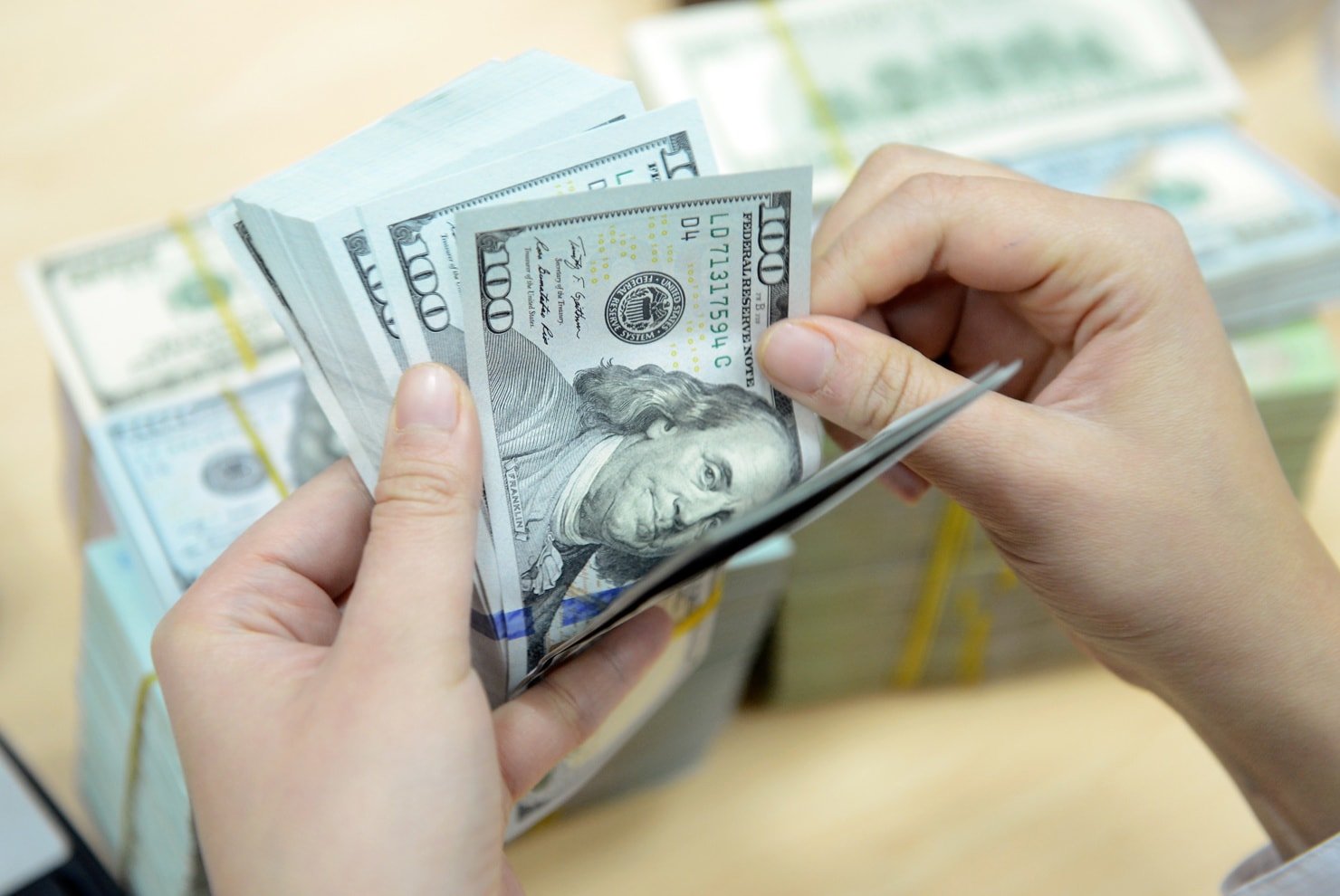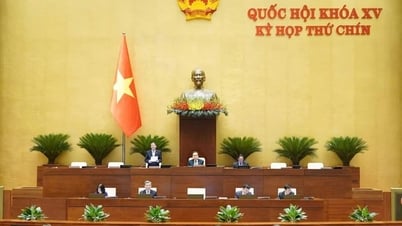The common prices recorded at exchange points are 26,285 VND/USD for buying and 26,385 VND/USD for selling. Compared to the previous session, the free USD increased by 165 VND and 155 VND respectively in both directions.
The State Bank also adjusted the central exchange rate up by 5 VND, to 24,898 VND/USD. With a margin of ±5%, commercial banks are allowed to trade at a ceiling rate of 26,143 VND/USD and a floor rate of 23,653 VND/USD.
The State Bank of Vietnam's Transaction Office also raised the reference buying and selling prices by 5 VND, currently at 23,704 - 26,092 VND/USD.
The USD price at the commercial banking system also continued to increase. Vietcombank listed the cash buying price at VND25,710/USD and the selling price at VND26,100/USD, an increase of VND40.
At BIDV, the exchange rate was adjusted to 25,755 - 26,115 VND/USD, an increase of 50 VND each way. VietinBank also increased the buying and selling price by 37 VND, trading at 25,745 - 26,105 VND/USD.
In the private banking group, the upward trend continued. Techcombank raised the USD price by 45 VND and 42 VND respectively in both directions, to 25,731 - 26,128 VND/USD.
Eximbank also increased its buying price by 30 VND and its selling price by 50 VND, trading at 25,710 - 26,120 VND/USD. Overall, the USD is maintaining a strong upward trend in both the free market and the banking system.

In the world market, the USD price decreased slightly. The US Dollar Index (measuring the greenback's fluctuations against 6 major currencies) was at 99.27 points, down 0.17% compared to the previous session.
The dollar has lost about 9% of its value against a basket of major currencies since mid-January, falling to a three-year low, a rare and sharp decline that has raised concerns that investor confidence in the United States is waning.
Normally, exchange rates can fluctuate due to factors such as inflation, interest rate policies or central bank moves. But this time, the sudden decline in the value of the dollar has many experts worried that the underlying cause may come from the instability of President Donald Trump's trade policy and the wavering confidence in the ability of the US to govern.
The dollar has long been considered a “safe haven” currency and has played a dominant role in global trade. This has allowed the United States to borrow money at low interest rates and maintain its influence on the world stage. But if that confidence were to collapse, that “excessive privilege,” as economists call it, could disappear quickly.
The dollar’s decline was accompanied by sharp swings in the stock and bond markets. Both US stocks and bonds fell simultaneously, a rare occurrence in developed countries, and a sign that the trade war may be eroding the safe haven status the dollar once enjoyed.
The dollar should have rallied when the US imposed tariffs on foreign goods. But this time, it has fallen sharply, surprising economists. Since early April, the dollar has lost more than 5% against the euro and the pound, and 6% against the yen.
Some analysts believe the dollar has been overvalued for years and is entering a correction phase. But even so, the loss of the dollar’s “privilege” is still a concern.
The strength of the US dollar also helps the US maintain low interest rates, control inflation and put pressure on countries like Venezuela, Iran or Russia by prohibiting them from accessing the global payment system.
Now that is under threat. Deutsche Bank warns of a “crisis of confidence” in the dollar, while Capital Economics says its dominance is being questioned.
For Americans, this means more expensive imports, from French wine to Korean electronics — not just because of tariffs but also because of a weaker dollar. Consumers could also pay higher interest rates on mortgages, auto loans, and even the national debt.
Source: https://baonghean.vn/ty-gia-usd-hom-nay-19-4-2025-thi-truong-tu-do-tang-manh-10295444.html



![[Photo] Prime Minister Pham Minh Chinh chairs conference on anti-smuggling, trade fraud, and counterfeit goods](https://vphoto.vietnam.vn/thumb/1200x675/vietnam/resource/IMAGE/2025/5/14/6cd67667e99e4248b7d4f587fd21e37c)
























































































Comment (0)